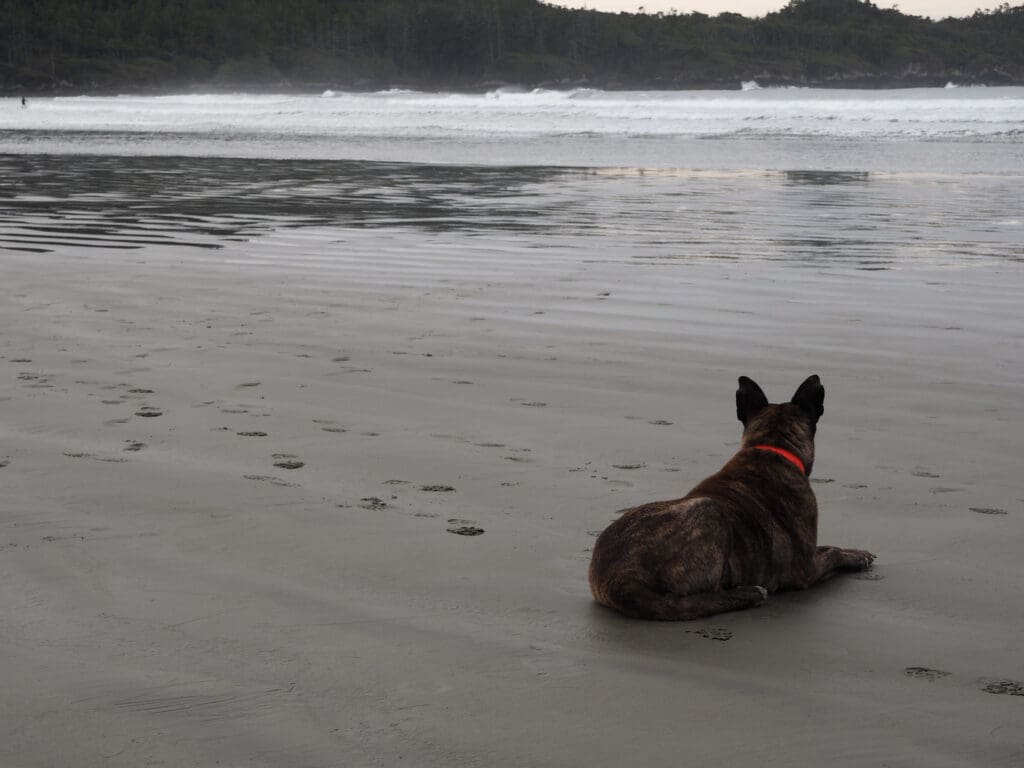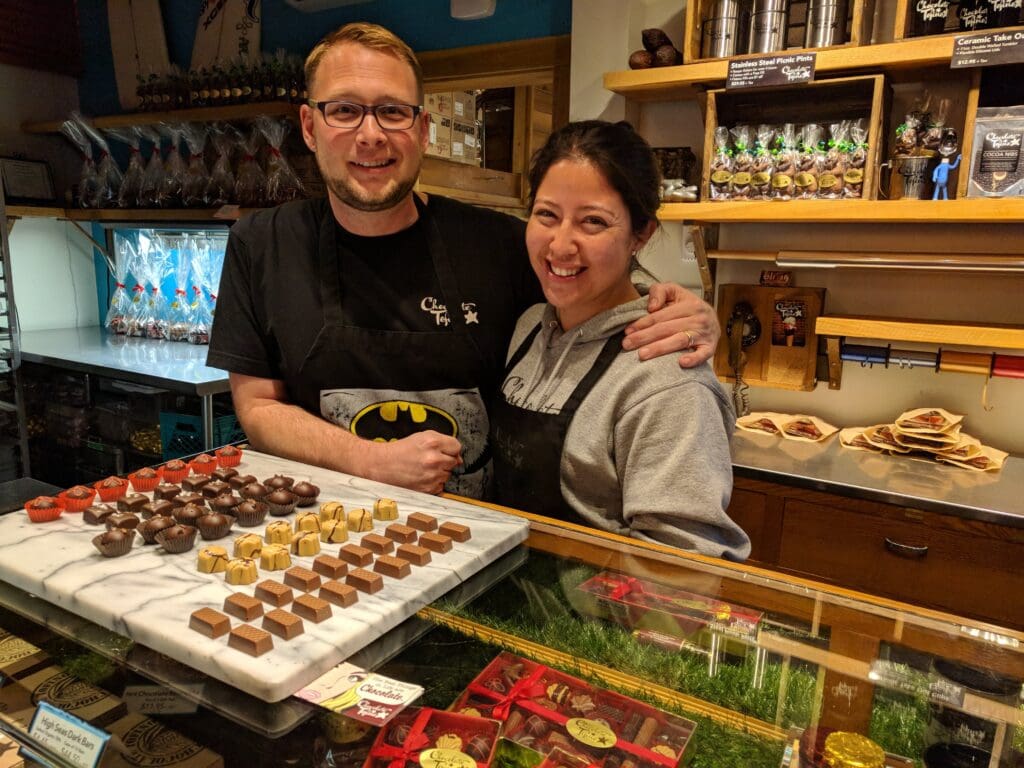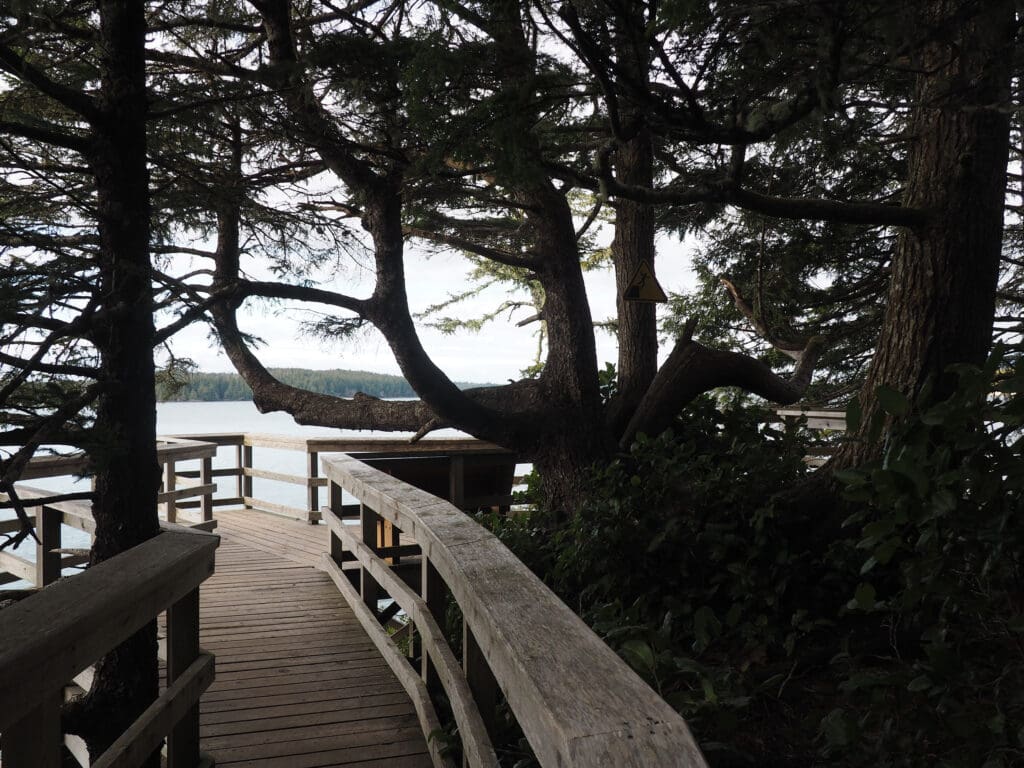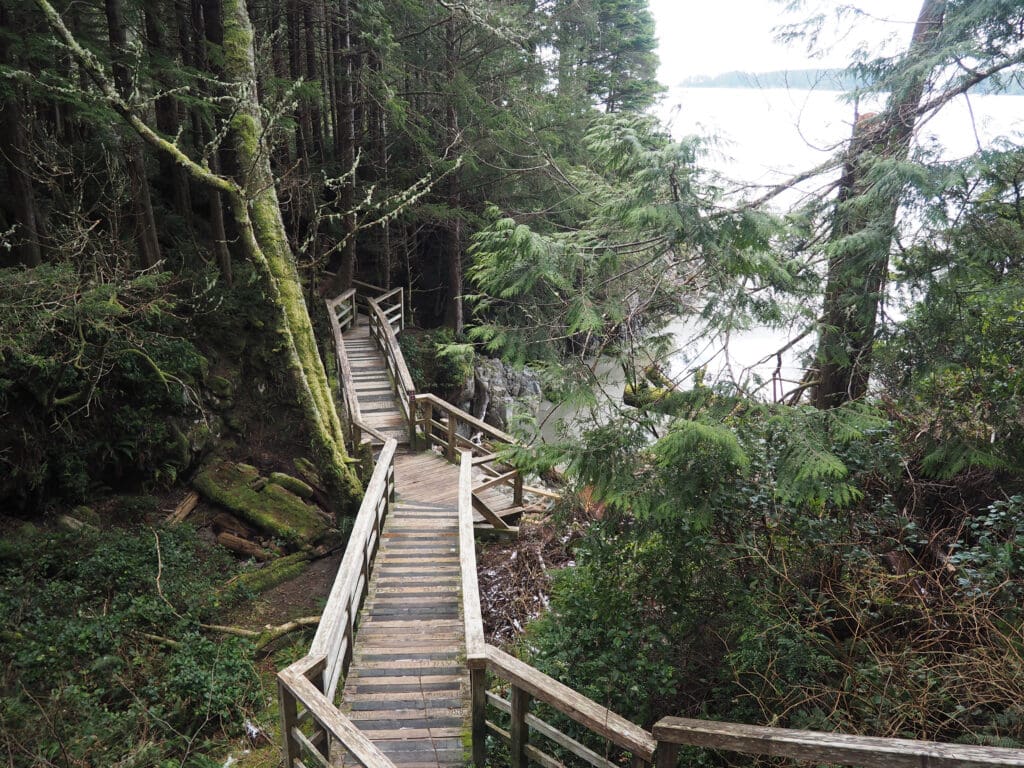 TOFINO, B.C. – There’s a time-worn story from the remote West Coast village of Tofino from a few years back about a resort coffee shop that, in a moment of enthusiasm, hung a Starbucks sign out front. Tofitians – as they call themselves – were not amused.
TOFINO, B.C. – There’s a time-worn story from the remote West Coast village of Tofino from a few years back about a resort coffee shop that, in a moment of enthusiasm, hung a Starbucks sign out front. Tofitians – as they call themselves – were not amused.
Franchise eateries like Tim Hortons and McDonald’s are about as welcome in Tofino as ice and snow. And as rare. In 2010, in fact, council was asked to ban them altogether. Not surprisingly, the Starbucks sign at the Crystal Cove Beach Resort came down quickly without the need for a ban.
In fact, the ban was never officially imposed, and apparently not needed.
Tofino has become an immensely popular summer destination, particularly for western Canadians and Americans from the northwest U.S. Its rugged coastline and ancient temperate rainforests at “the end of the road” was once an irresistible draw for hippies (remnants of whom linger in a wooded commune). Yet now, it is bearded hipsters, wealthy families, and Canada’s hardy surfers who also come for the nascent foraged cuisine scene or the predictably chilly waves.
On a recent visit, my wife and I got a bit of both: Sitting in the rustically chic Great Room dining area at the Long Beach Lodge, we sipped on Tofino-distilled spirits and local brews, enjoyed a creative nibbly of humous, olives and fresh-baked bread, and watched the year-round surfers tackle the surprisingly consistent waves at Cox Beach.
Winter – if you want to call it that – is the new ‘it’ season in Tofino. It’s a time when hikes, ocean paddling and surfing are still relatively comfortable, and yet visitors can avoid the summer crowds that push the town to its limits.
The summer onrush drives the year-round population of 2,000 souls to a peak of several times that number – a crush that even the visitor-friendly mayor Josie Osborne concedes is close to the limit. “We’re asking ourselves, ‘How much is too much?’,” she says. At summer peak, “I think we’re getting close.”
This is a near-complete about-face for a once-forgotten village built on the resource extraction industries of logging and fishing. After dramatic protests in the 1990s cut short planned clear-cut logging in Clayoquot Sound, the town realized it had to lay a new economic cornerstone. With a freshly minted United Nations designated Biosphere Reserve on its doorstep, the solution was obvious – tourism.
The economic overhaul has been successful, but with it have come its own challenges. As Tofino’s popularity has grown, its property values have soared from working-class prices to beyond the reach of average incomes. Resourceful Tofitians looking to make their finances work spotted an opportunity to increase property income by converting long-term rentals to AirBnBs. It helped them but made it difficult for seasonal service employees to find a place to stay.
Long-time residents rue the disruptions that come with tourism success and go out of their way to avoid crowded streets. As the mayor says, “Our laneways have become our saneways.”
It turns out the reactions of Tofitians are not so unique. In fact, a tool created in 1975 called Doxey’s irritation index describes how communities with growing tourist industries go through a four-step emotional evolution: from initial euphoria, to apathy, annoyance and ultimately antagonism.
Tofino might best be described in the annoyance phase, although many still count tourism as a blessing.
Tofino wants to avoid the antagonism stage. So, Tourism Tofino was mandated to encourage more visitors to come for authentic and meaningful experiences after the crowds thin post-Thanksgiving, right through until April.
The mayor says the town doesn’t need more hotel development – in fact, “Tofitians have never embraced large development” – but rather needs to find a way to fill the existing resorts in the cooler months.
Except for the dicey weather-dependent airline schedule (Pacific Coastal flies right to the town), there are many reasons to choose winter months for a visit. At the top of the list are amazing places to stay, like Tofino Resort Marina, Long Beach Lodge and the world-famous Wickaninnish Inn. They are situated in spectacular settings and have made a mission out of cultivating great chefs and assembling world-class wine collections. We sampled memorable meals and cocktails at all three.
But there are less-obvious pleasures, like the incredible Chocolate Tofino. When Cam and Kim Shaw left chilly Lloydminster, Sask., to take over the shop a few years ago, they made it their mission to produce the best chocolate to be found anywhere. Their research even took them to Colombia, where they sourced their own cacao.
The results are so astounding, long summer lineups are the norm. But not in winter.
Charles McDiarmid, managing director of the Wickaninnish and member of the resort’s founding family, says Tofino considers its tourism arm a “destination management organization” – focusing on the quality of the experience. The Wick, as it is known, literally invented the notion of November “storm season” several years ago as an ocean-watchers’ dream.
Winter months are ideal for those looking for a more relaxed experience, says Nancy Cameron, executive director of Tourism Tofino. Even during storm season, there are days when you can walk the beaches and hike the forests.
“There’s a lot of fabulous days when you can do everything,” Cameron says. “When it rains, it rains hard. But it doesn’t rain every day.”
During our visit, we enjoyed several clear days with temperatures at or above freezing, a refreshing break from the – 30 C temperatures in our prairie home.
Another important element to the authentic experience is the area’s green ethos. Lilly Woodbury, Pacific chapter manager of the Surf Rider Pacific Rim environmental group, notes eight priorities for the group, ranging from a ban on plastic straws to a program that will recycle the ubiquitous surfers’ wetsuits into yoga mats. Volunteers are recruited for regular cleanups of local and remote beaches.
Such youthful enthusiasm is heartening for Osborne, who has been mayor of Tofino since 2013. Like many of her fellow residents, she comes by her environmental philosophy honestly. In an earlier life, she worked as a fisheries biologist for local Indigenous communities and was also executive director of the Raincoast Education Society. She serves or has served on boards of arts, culture, tourism, and environmental non-profit organizations.
Osborne says Tofino’s vision of its future is gradual and thoughtful growth, recognizing the natural limits of what the community can sustain.
“We want to be a community of tourism,” she says, “rather than a tourist town.”
The writer was a guest of the destination. Content was not subject to approval.
Veteran political commentator Doug Firby is president of Troy Media Digital Solutions and publisher of Troy Media.
The views, opinions and positions expressed by columnists and contributors are the author’s alone. They do not inherently or expressly reflect the views, opinions and/or positions of our publication.







